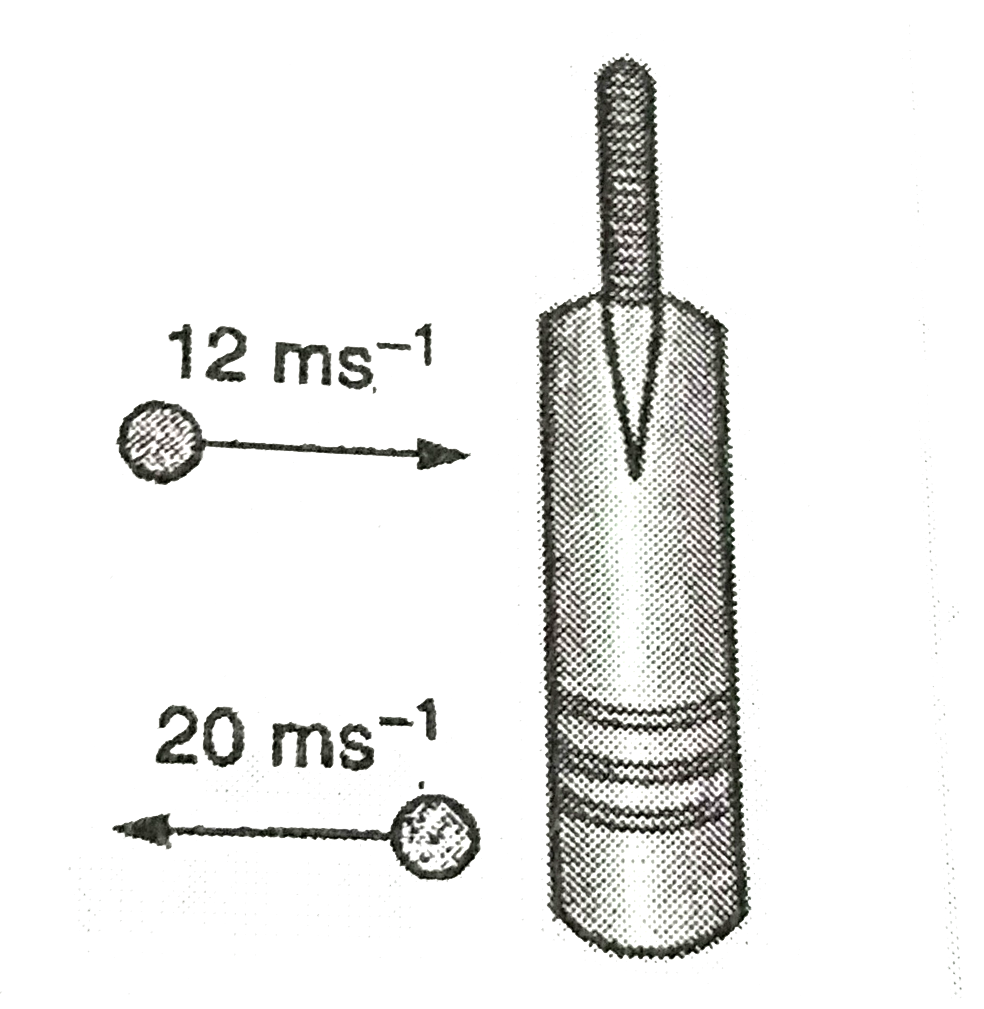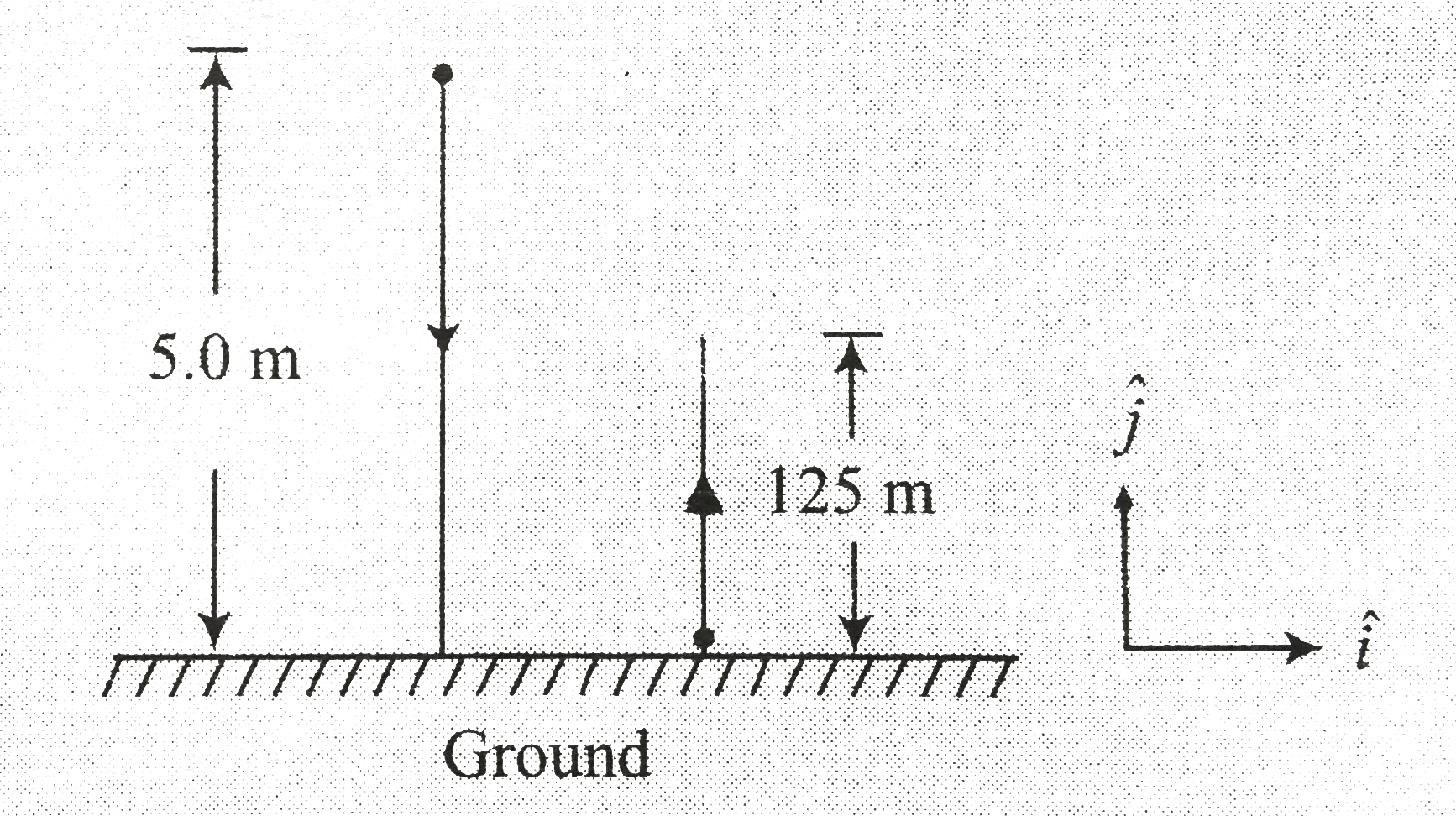A cricket ball of mass 200 gm and bowled at 20ms−1 is hit and returned straight in the opposite direction with a velocity of 10ms1. Find the impulse and impulsive force, if the time of contact of ball and bat is 0.05s ?
m=200gm=0.2kg,u=20ms−1,v=−10ms−1
The ball travels in the opposite direction after exerting force. So velocity is negative.
Impulse =F×t=m(v−u)
=0.2[−10−20]=−6Ns
Negative sign shows that the force exerted is in a direction opposite to the direction of initial velocity.
Driving force =Impulsetime=60.05=120N.
Topper's Solved these Questions
- DYNAMICSBOOK - ICSECHAPTER - DYNAMICSEXERCISE - CONCEPTUAL SHORT ANSWER QUESTIONS WITH ANSWERS
20 Videos
- DYNAMICSBOOK - ICSECHAPTER - DYNAMICSEXERCISE - SHORT ANSWER QUESTIONS
93 Videos
- DYNAMICSBOOK - ICSECHAPTER - DYNAMICSEXERCISE - SHORT ANSWER QUESTIONS WITH ANSWERS
12 Videos
- DIMENSIONSBOOK - ICSECHAPTER - DIMENSIONSEXERCISE - SELECTED PROBLEMS (FROM CONVERSIONS OF ONE SYSTEMS OF UNITS INTO ANOTHER)
9 Videos
- FRICTIONBOOK - ICSECHAPTER - FRICTIONEXERCISE - Selected problems
30 Videos
Similar Questions
A cricket ball of mass 150 g is moving with a speed of 12ms−1 and is hit by a bat so that the ball is turned back with velocity of 20ms−1 if duration of contact between bat and ball is 0.01 s then:

View Solution6A cricket ball of mass 250 gm moving with a velocity of 24 m/s is hit by a bat so that it acquires a velocity of 28 m/s in the opposite direction. The force acting on the ball, if the contact time is 1/100 of a second, will be -
View Solution
Knowledge Check
A ball of weight 0.1 kg coming with speed 30 m / s strikes with a bat and returns in opposite direction with speed 40 m / s , then the impulse is (Taking final velocity as positive)
A−0.1×(40)−0.1×(30)B0.1×(40)−0.1×(−30)C0.1×(40)+0.1×(−30)D0.1×(40)−0.1×(20)A cricket ball of mass 0.5 kg strikes a circket bat normally with a velocity of 20 m s−1 and rebounds with a velocity of 10 m s−1. The impulse of the force exerted by the ball on the bat is
A15 N sB25 N sC30 N sD10 N sA ball of weight 0.1 kg coming with speed 30 m / s strikes with a bat and returns in opposite direction with speed 40 m / s , then the impulse is (Taking final velocity as positive)
A−0.1×(40)−0.1×(30)B0.1×(40)−0.1×(−30)C0.1×(40)×0.1(−30)D0.1×(40)−0.1×(20)
A ball of mass 0.1 kg is thrown against a wall. It strikes the wall normally with a velocity of 30 ms−1 and rebounds with a velocity of 20 ms−1. Calculate the impulse of the force exerted by the wall.
View SolutionA rubber ball of mass 50 g falls from a height of 5m and rebounds to a height of 1.25 m. Find the impulse and the average force between the ball and the ground if the time for which they are in contact was 0.1s

View SolutionA rubber ball of mass 50 g falls from a height of 5m and rebounds to a height of 1.25 m. Find the impulse and the average force between the ball and the ground if the time for which they are in contact was 0.1s

View SolutionA cricket ball of mass 150 g is moving with a speed of 12ms−1 and is hit by a bat so that the ball is turned back with velocity of 20ms−1 if duration of contact between bat and ball is 0.01 s then:

View SolutionAccording to Newton s second law of motion F=ma where F is the force required to produce an acceleration a in a body of mass m If a = 0 then F=0 no external force is required to move a body uniformly along a straight line If a force F acts on a body for t seconds the effect of the force is given by Impulse =F × t = change in linear momentum of the body
A cricket ball of mass 150g is moving with a velocity of 12m/s and is hit by a bat so that the ball is turned back with a velocity of 20m/s if duration of contact between the ball and the bat is 0.01sec The impulse of the force is .
View Solution
